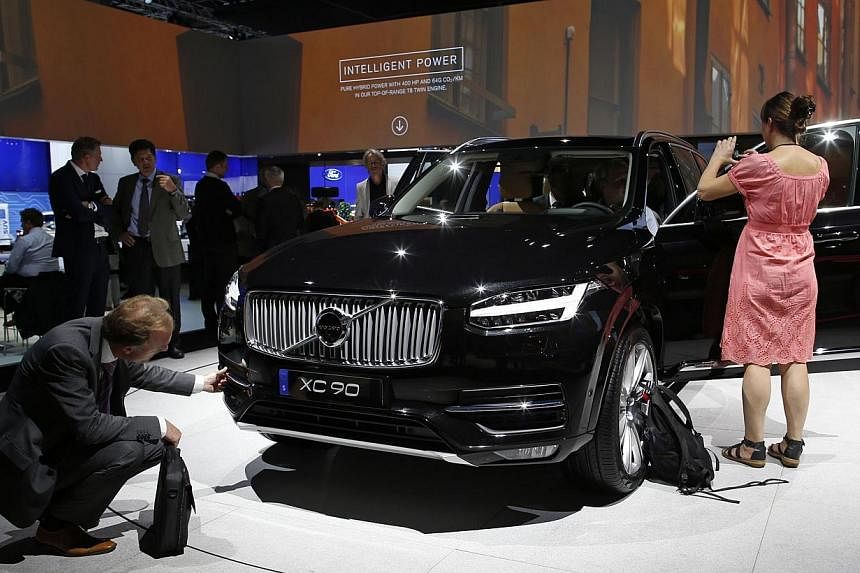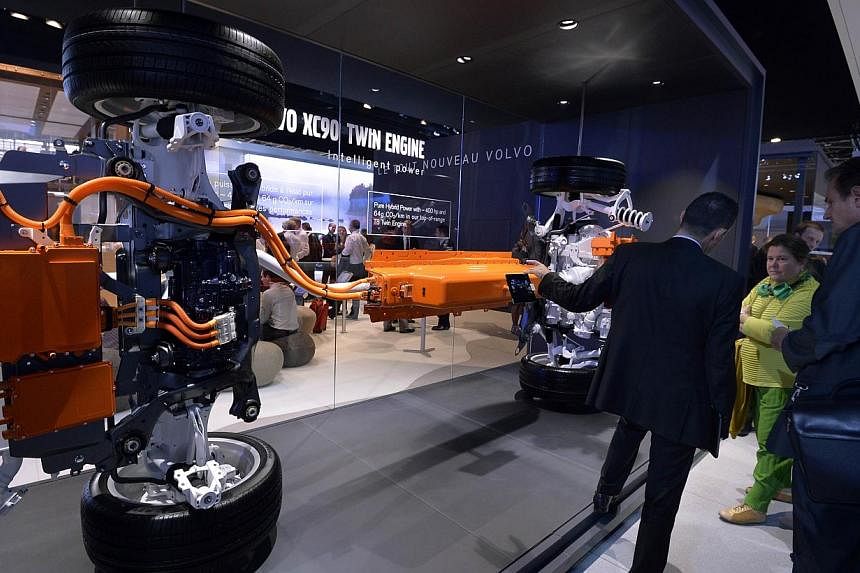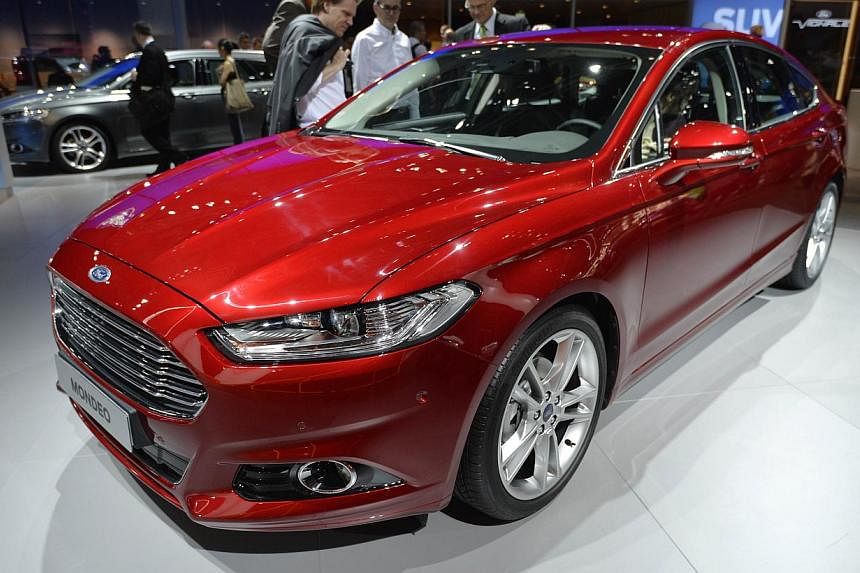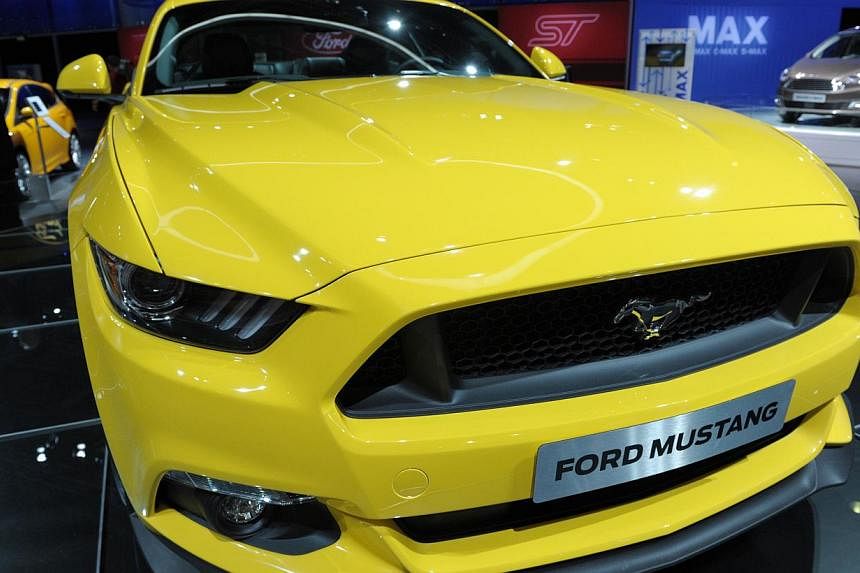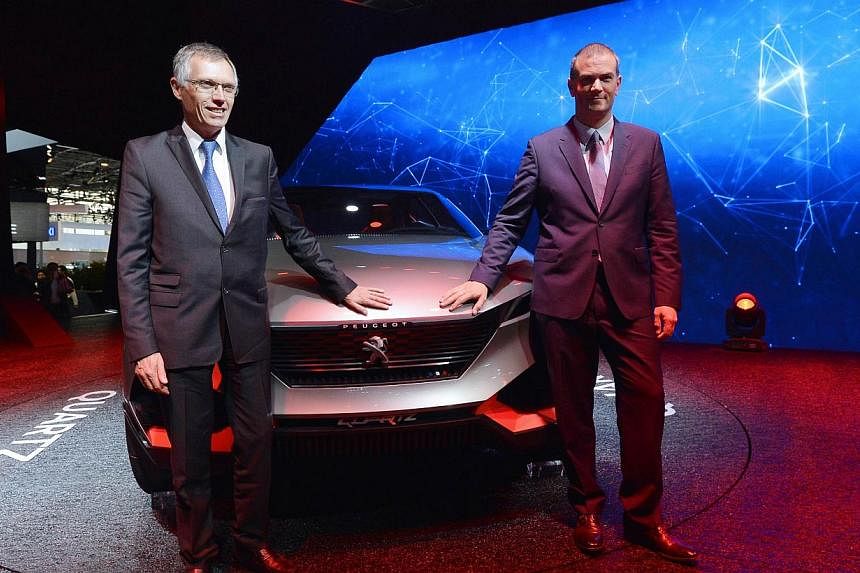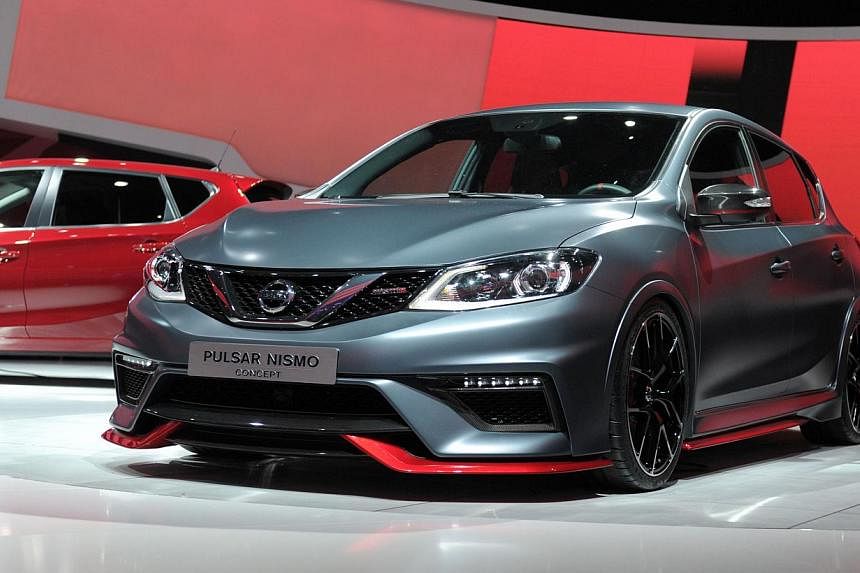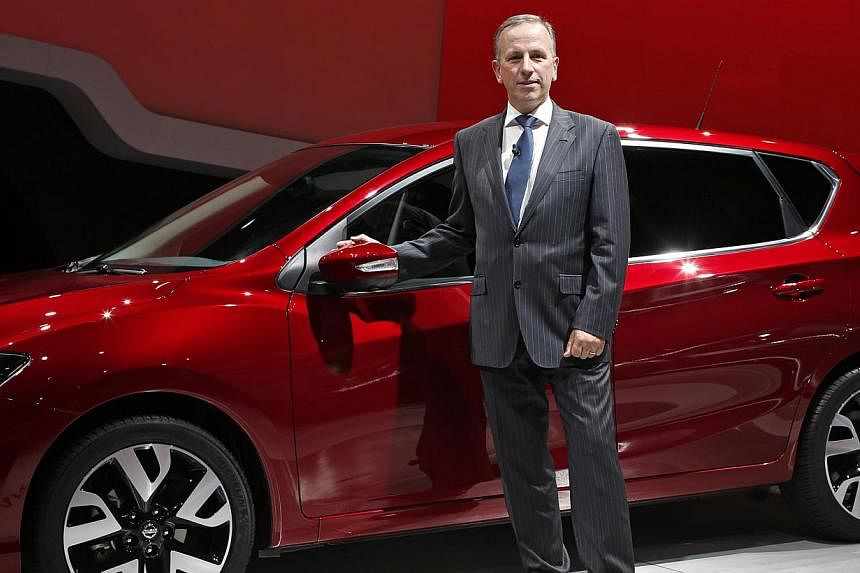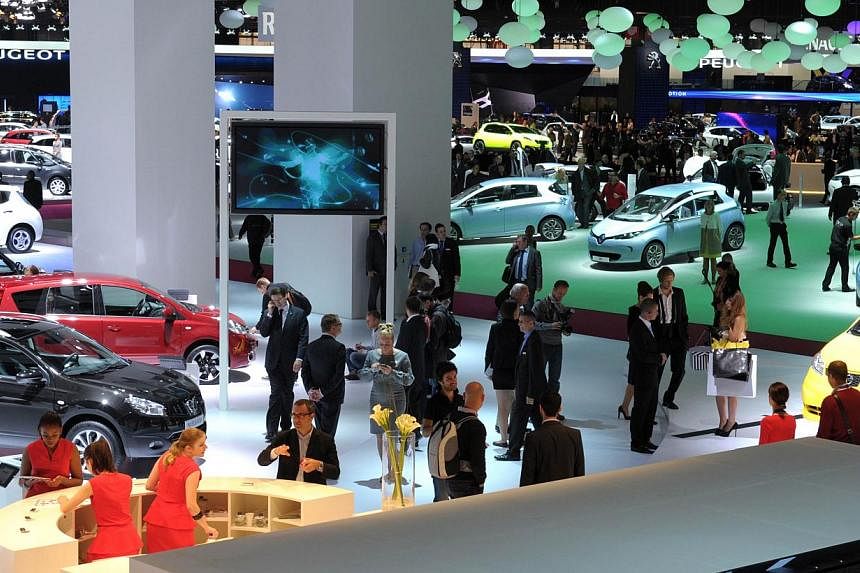PARIS (AFP) - Ever had trouble getting out of a tight parking space? Had a crash in a foreign country? And what if your car could avoid a potentially fatal collision with a pedestrian?
Carmakers vaunting their latest offerings at the Paris Motor Show this week are increasingly using technology that would make James Bond salivate as they bid to take driving risks and burdens out of customers' hands.
"It's coming to the point now that because of all these new technologies, carmakers are starting to bring them together towards building vehicles capable of highly automated driving," said Ian Fletcher, analyst at IHS Automotive.
Volvo has pulled out all the stops to showcase its latest high-tech XC90 SUV, putting it on a revolving platform with rain and snow falling on the sides in a soothing, nature-like decor that contrasts with the loud music and smiling models nearby.
"It's probably the safest car on Earth right now," boasted Dennis Nobelius, XC90 project manager, as he pointed out a device on the windscreen that allows the car to spot a pedestrian and avoid a collision.
Carmakers have for years been working to perfect anti-collision systems involving pedestrians, who, being unpredictable and prone to change direction at a moment's notice, are more difficult to detect than other objects.
Like Volvo, Ford also uses a similar device to spot pedestrians, with in-built cameras and radars to detect and identify a person, and an intelligent algorithm to work out the probability of them crossing the car's path.
If the technology determines that the car will hit the person, an audible and visible warning signal is immediately sent to the driver. If the driver ignores it, the car automatically brakes.
"The industry is working towards the goal of reducing accidents to a minimum, and the governments are also pushing the industry towards this goal," said Thomas Lukaszewicz, head of Ford's active safety research in Europe.
And while independent test centres had previously given vehicles good safety awards based on the cars' body structure and equipment such as airbags, they now focus also on so-called active safety - systems that assist the driver in preventing an accident.
Volvo's XC90, for instance, has sensors at the back of the car that can spot a vehicle coming up too fast from behind.
The car's tail lights automatically emit big flashes to warn the approaching vehicle, and the safety belt self-tightens around the driver to try and avoid whiplash if there is an impact.
Similarly, the seat has a structure that collapses in case of an off-road accident, to avoid too much of a brutal shock to the spine.
But it's not just in the domain of safety that carmakers are applying the latest technologies.
French car giant PSA Peugeot Citroen is working on launching a host of services that will enable technical data such as the number of kilometres travelled to be sent to the driver's smartphone.
It is also planning to launch other services that will allow customers to scan a piece of equipment that needs fixing with their smartphone.
Users then receive repair instructions, obviating the need to go to the dealer for every minor problem.
Already in 2003, the French group had launched an emergency system that sends a warning signal to a 24-hour centre if a car crashes in France or elsewhere in Europe, alerting rescue services on behalf of the driver.
Automatic parking is another feature that has helped drivers manoeuvre into difficult places.
But Monika Wagener, spokeswoman for Ford's European research division, said the firm had found that customers could get into a tight parking spot, but couldn't get out again.
Now, the US firm's system has been upgraded so that the car drives out of - and not just into - parking spaces automatically.
Still, all this high-technology comes with its downsides.
"It's the most tech-savvy who are going to adapt to high-tech cars more easily, and it's a difficult ask for a lot of people just to get their head round how to use these features," Fletcher said.
"And there's the question of accountability. Who is at fault if there is an accident with these automated vehicles?"
